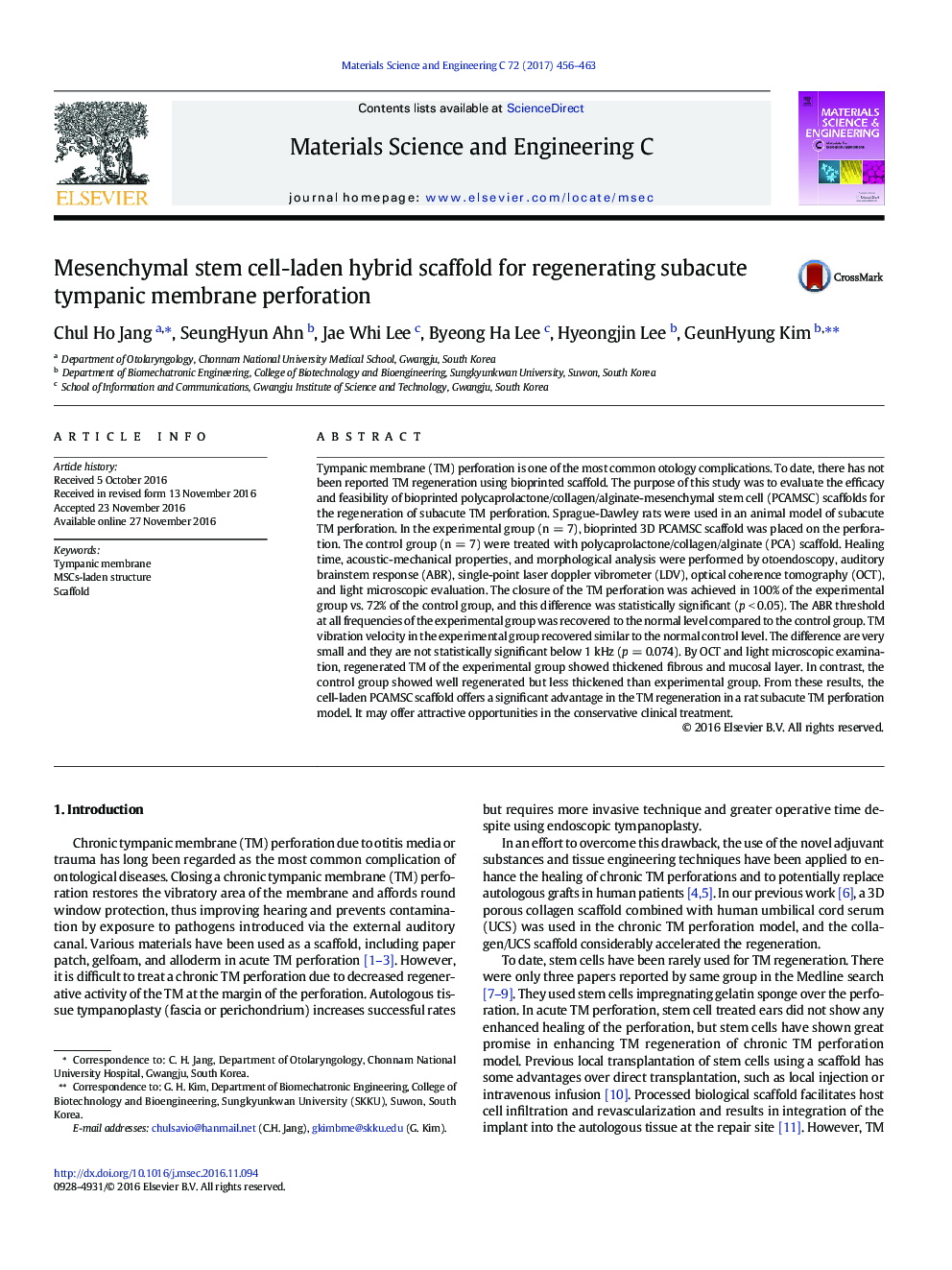| Article ID | Journal | Published Year | Pages | File Type |
|---|---|---|---|---|
| 5435224 | Materials Science and Engineering: C | 2017 | 8 Pages |
â¢MSCs-laden scaffold was fabricated using a centrifugal spinning and cell-printing process.â¢The cell-laden scaffold showed the outstanding regeneration of subacute TM perforation.â¢The scaffold can be a novel treatment for subacute or chronic TM perforation.
Tympanic membrane (TM) perforation is one of the most common otology complications. To date, there has not been reported TM regeneration using bioprinted scaffold. The purpose of this study was to evaluate the efficacy and feasibility of bioprinted polycaprolactone/collagen/alginate-mesenchymal stem cell (PCAMSC) scaffolds for the regeneration of subacute TM perforation. Sprague-Dawley rats were used in an animal model of subacute TM perforation. In the experimental group (n = 7), bioprinted 3D PCAMSC scaffold was placed on the perforation. The control group (n = 7) were treated with polycaprolactone/collagen/alginate (PCA) scaffold. Healing time, acoustic-mechanical properties, and morphological analysis were performed by otoendoscopy, auditory brainstem response (ABR), single-point laser doppler vibrometer (LDV), optical coherence tomography (OCT), and light microscopic evaluation. The closure of the TM perforation was achieved in 100% of the experimental group vs. 72% of the control group, and this difference was statistically significant (p < 0.05). The ABR threshold at all frequencies of the experimental group was recovered to the normal level compared to the control group. TM vibration velocity in the experimental group recovered similar to the normal control level. The difference are very small and they are not statistically significant below 1 kHz (p = 0.074). By OCT and light microscopic examination, regenerated TM of the experimental group showed thickened fibrous and mucosal layer. In contrast, the control group showed well regenerated but less thickened than experimental group. From these results, the cell-laden PCAMSC scaffold offers a significant advantage in the TM regeneration in a rat subacute TM perforation model. It may offer attractive opportunities in the conservative clinical treatment.
Graphical abstractDownload high-res image (173KB)Download full-size image
